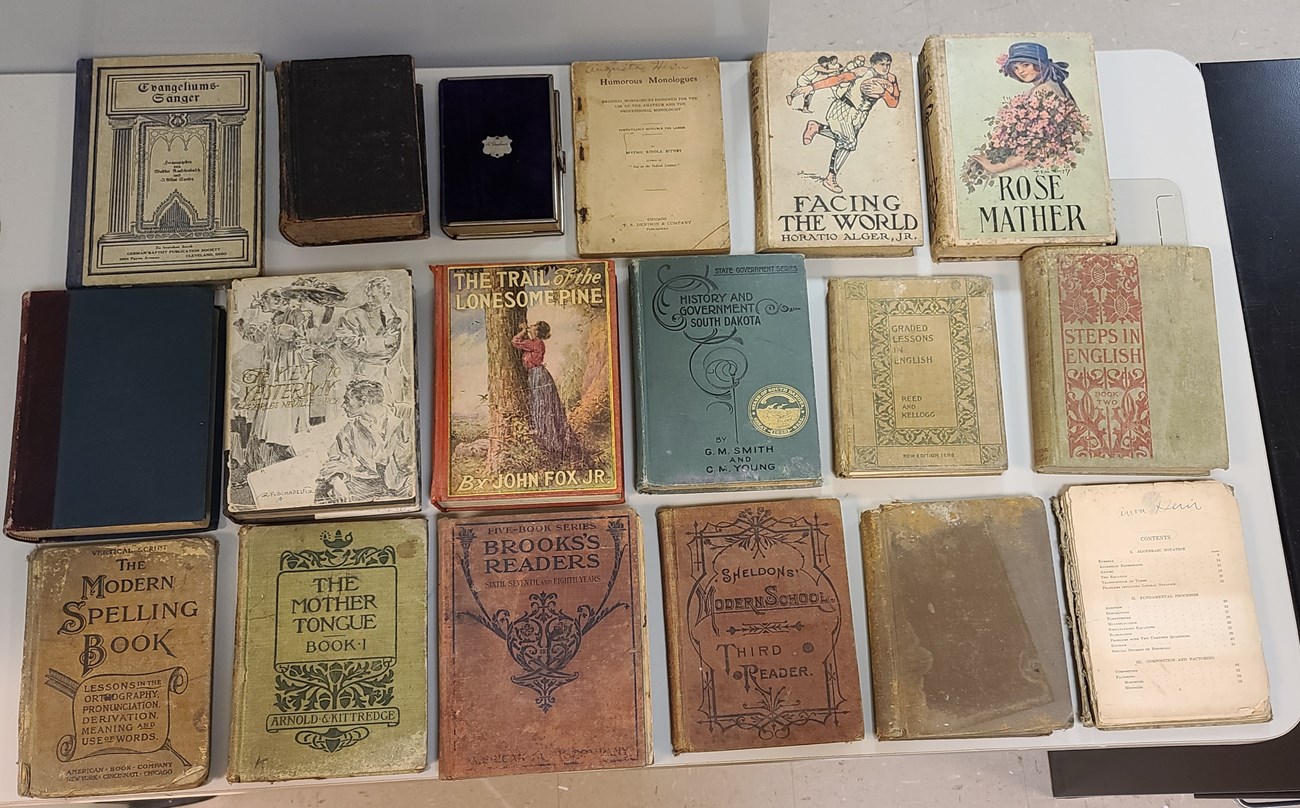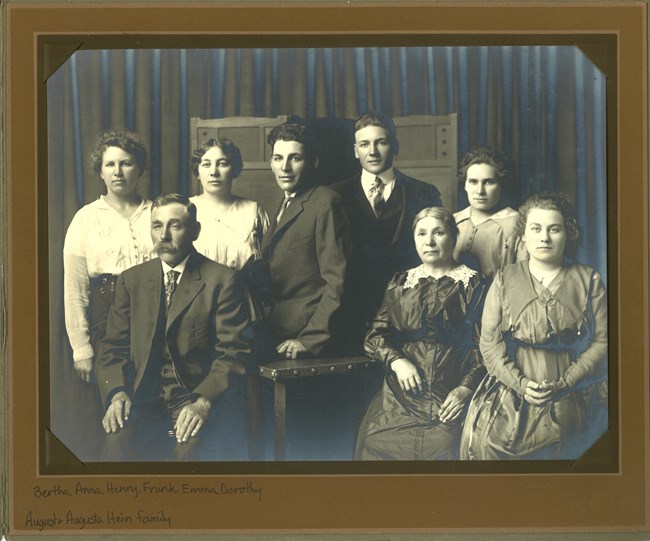Last updated: January 3, 2024
Article
Learning about Homesteaders through the Hein Book Collection

NPS Photo

NPS Photo
The Hein Family
August Hein immigrated to Hanover, Wisconsin from Germany in 1880, following his older brother Wilhelm. Their siblings and parents soon joined them. In the spring of 1883, the two brothers filed homestead claims in Pearl Creek Township, Beadle County, South Dakota. Afterwards, they traveled back to Wisconsin to gather their family and belongings.The Hein family often spent winters in Janesville, Wisconsin. This is where August met Augusta Grübner, another German immigrant. She moved out to South Dakota with her father and married August Hein on his homestead on December 12, 1886.
August & Augusta Hein lived on their homestead for over thirty years. They raised their six children and endured the hardships and triumphs of pioneer life. Once their children had grown up, they gave the homestead to their oldest son Henry and moved to the nearby town of Huron, South Dakota.

NPS Photo
Cultural Ties
Homesteaders came from a wide variety of backgrounds. They were members of many different cultural, ethnic, and religious groups from around the world. Many carried on their traditions using books.From the mid-19th century until the United States entered World War I, German was widely spoken in the United States. As thousands of German-speaking immigrants and their descendants set out to homestead, they brought German culture with them. In 1900, there were over 600 German language newspapers published in the United States. Many churches held services exclusively in German. Some public schools even taught primarily in German.
There are three German religious books from the August and Augusta Hein family in our museum collection. Two are German Baptist hymnals published in Cleveland, Ohio (1894 & 1910). The other is a German Lutheran hymnal (1883) with Augusta’s maiden name engraved on the front. That book dates to her time in Wisconsin before she met her future husband. These hymnals show the family attended German-language church services and that Augusta switched denominations from Lutheran to Baptist.

NPS Photo
Reading at Home
While not all homesteaders were literate, many were readers. Books are one way homesteaders could learn new things, connect with others, and have fun.Leisure reading is known to help improve comprehension, reduce stress, and improve students' scores. Therefore, it is no surprise that many homesteaders gave their children books to read at home. The Hein family was no exception. Their children's names are inscribed on many of the books that were donated to the park after being kept in the family for a century.
The Hein collection features six leisure reading books. These books include a variety of subjects: humor like Humourous Monologues (1906), nonfiction like The Queer, the Quaint, and the Quizzical (1890), adventure like Facing the World (1911), and romance like The Trail of the Lonesome Pine (1908).

NPS Photo
Education
Homesteaders often stressed the importance of education for their children. Education was seen as a way to improve your life especially to minorities and immigrant families like the Heins.Most children of homesteaders addended rural schools until eighth grade. Some dropped out before then, but others went on to college or to teach at other schools.
Often the pupils in rural school were from a few local families who lived within a few miles of the school. With a mix of ages and grade levels, students worked independently the majority of the time. The teacher would call groups of students to the front to work on specific subjects.

NPS Photo
Nine educational books are part of the Hein collection. The publication dates of these books range from 1893 to 1907 covering the range of years the Hein children were in school. The subjects of these textbooks include: spelling, reading, English, arithmetic, and government. Most of the books included signatures from at least two of the Hein children.

Life is but a school of education. Every day we make a recitation. But death will end this turn without vacation. Then will come the hard examination. In the golden chains of friendship regard me as a link. When your life is like a snowflake it leaves a mark but not a stain. Some write for pleasure some write in vain but I write simply to sign my name.
Anna Hein
NPS Photo
